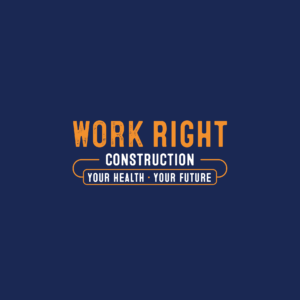- Around 40,000 construction workers suffer injuries to muscles, bones, joints and nerves
- A thousand inspections in October and November
- Serious aches, pains and strains can affect every part of someone’s life
Lifting and moving heavy objects on construction sites is harming the health of thousands of brickies and builders to such a degree every aspect of their lives is affected.
Experts at the Health and Safety Executive (HSE) are warning construction workers are picking up injuries and conditions that can stop them working and leave them struggling to stand, walk, or sit down.
HSE inspectors will be carrying out 1,000 inspections in October and November checking how workers are moving heavy or bulky materials.

The law requires employers to prevent the ill health of their workers, which includes injuries to muscles, bones, joints and nerves that can develop over time, known as musculoskeletal disorders (MSDs). However, recent figures show around 40,000 people in the construction industry suffer an MSD each year, which can cause years of agonising aches and pains.
Moving and handling risks should be considered and prevented where possible at the design stage. Once on site and before work starts, employers should talk to workers about controlling existing risks to make sure that the right training, aids and equipment are there to prevent injuries.
If moving and lifting is managed properly, a physical job on a building site should not result in aches, pains and strains which affect every part of workers’ lives.
Matt Birtles, principal ergonomist at HSE, said: “Serious aches, pains and strains can affect every part of someone’s life. They can struggle to get themselves dressed and undressed, they can be unable to pick up their children or grandchildren.
“They can struggle to sit down and stand up, they can struggle to keep still and move around. The most intimate parts of their lives can be severely affected – they might be desperate to go the toilet but find themselves unable.
“It’s not something that many people feel comfortable talking about, perhaps particularly on a building site, but if your back has gone or if you’re in agony whenever you move your arms, measures need to be put in place to address the causes.”
HSE’s head of construction, Sarah Jardine said: “Inspectors are visiting a range of construction sites to check the action businesses are taking to ensure their workers are being protected.
“Everyone involved in construction has a role to play in keeping people safe. Risks must be managed where they can’t be prevented, and risk management arrangements must be reviewed frequently to ensure they are effective.
“We want everyone in the industry, from designers to contractors and their workers, to be aware of the risks associated with any moving or lifting task and put appropriate measures in place.
“This is a significant health issue for tens of thousands of construction workers and can lead to a lifetime of terrible aches and pains. The health of workers must be considered when planning construction work so that they can carry out their jobs without fear of injuring themselves, including being provided with the correct equipment to lift safely.
“Thankfully there are measures that can be taken to prevent injuries to muscles, bones, joints and nerves. Doing so is good for workers and good for the construction industry. It’s good for business.”
Notes to editors
- The Health and Safety Executive (HSE) is Britain’s national regulator for workplace health and safety. We prevent work-related death, injury and ill health through regulatory actions that range from influencing behaviours across whole industry sectors through to targeted interventions on individual businesses. These activities are supported by globally recognised scientific expertise. https://www.hse.gov.uk/
- HSE has a tool which can be used by employers to assess the risks to their workers of ill health. It can be found at: Manual handling assessment charts (the MAC tool) (hse.gov.uk)
- More information about the HSE campaign, Your Health, Your Future can be found at: WorkRight Construction: Your health. Your future – Work Right to keep Britain safe
- Statistics on the incidence of MSDs are published in the annual Labour Force Survey – LFS – Labour Force Survey – Self-reported work-related ill health and workplace injuries: Index of LFS tables (hse.gov.uk)
- Support for the HSE campaign, Your Health, Your Future:
Lawrence Webb, President-Elect, Institution of Occupational Safety and Health (IOSH) said:
“Musculoskeletal disorders, or MSDs, are one of the most widely-reported work-related health conditions. They have a huge impact on the lives of many people around the world, impairing their ability to work and their overall quality of life.
“This doesn’t have to be the case. Employers have a legal duty to protect their workers and this includes putting measures in place to prevent MSDs.
“And there are simple steps they can take to achieve this. Simply assessing moving and handling tasks to identify the risks, and then either eliminating the hazard at source or implementing controls that reduce the risk, will have a lasting benefit on the lives of construction workers, organisations and communities.
“IOSH is delighted to support HSE’s campaign. Working together is vital to raise awareness of MSDs, how to eliminate or manage them where necessary in support of construction worker health.”
Follow this news feed: HSE





